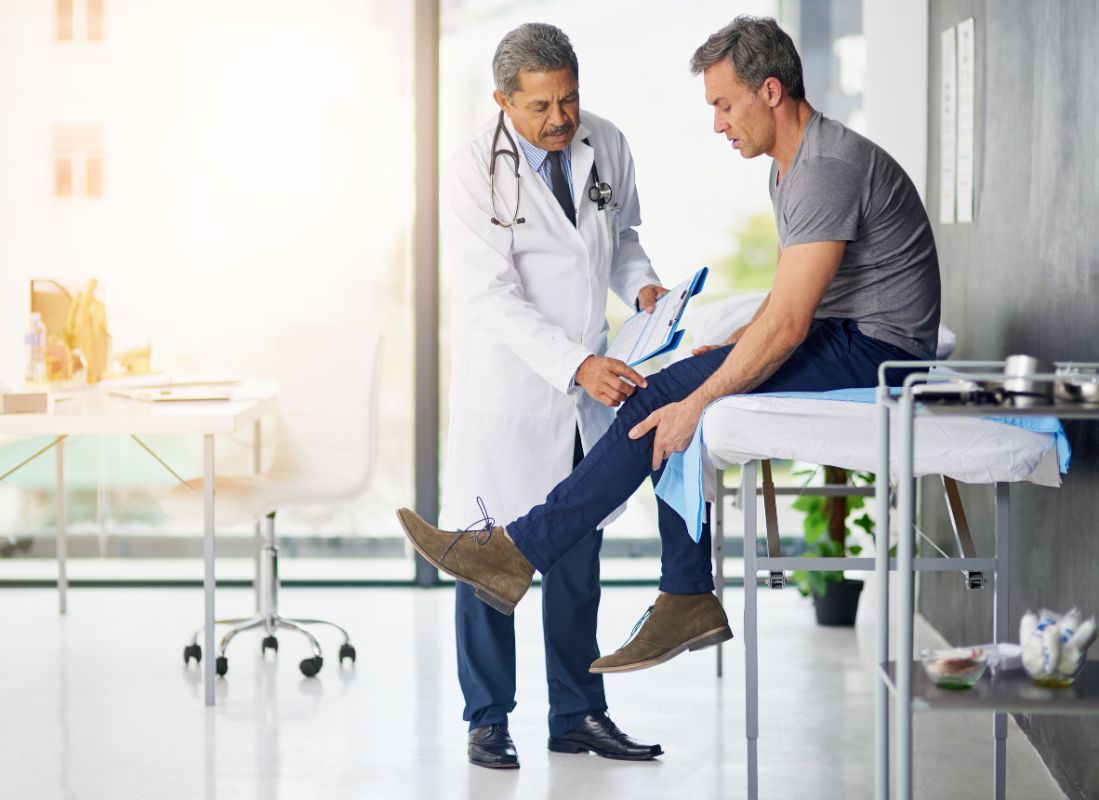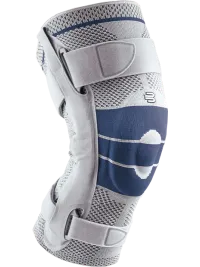You rely on your knees for nearly every move you make here in Memphis—from walking along the Mississippi River trails to standing up after a day on your feet at work. Your knees transfer motion from your feet to your hips and help you sit, stand, bend, lift, and carry. Whether you're working in construction, retail, or any physically demanding job, your knees take on a lot of stress. Any activity involving movement or weight bears down on your knees. When they ache, everyday life—and work—can become a real challenge.
Let's take a closer look at common causes of knee pain and the treatment options available right here in the Mid-South.
Common Causes of Knee Pain
Because we work our knees so often, we subject them to wear. The knee joint absorbs a good deal of jolts, bumps, and spills. It's hard to think of a typical human movement pattern that bypasses the knee joint. Therefore, the knee can be more susceptible to injury than other joints. Here are a few common causes of knee pain:
- Injury
- Aging
- Repeated stress
The Knee and How it Works
As with any other body part, the knee joint doesn't exist all on its own. Instead, it is comprised of different elements. Remember that song you sang when you were a kid? "Knee bone connected to the thigh bone…" Well, it's true. However, your knee isn't just a single bone. You're probably aware of the shin if you've ever played soccer, rugby, or football. If not, you'll definitely refamiliarize yourself with your shin bone as soon as you bang it into a trailer hitch…ow!
The anatomical term for your shin bone is the "tibia." It goes from your knee into your foot. Above the tibia is your thigh bone, or "femur." Follow it from the top of the knee into your pelvis. Cartilage, ligaments, and tendons help these bones connect. In the middle sits your kneecap. You may hear doctors refer to it as the "patella."
Muscles and Exertion
We've discussed bones. But what about muscles? Bones have their job, but the muscles provide the force to move the knee. You'll have to bend over to pick something up when you drop it on the floor. When you feel a tightness in the back of your legs, that's your hamstring muscle. It begins in your ankle and extends upward toward your hips. Hamstrings exert force by helping your knees bend. Since muscles like to function together, another muscle complements the hamstring. We call the muscles in your thigh the "quadriceps." It's a Latin term that means "four-headed." When you've bent your knee, the quadriceps help you straighten it.
If you enjoy activities popular around Memphis—like hiking at Shelby Farms, cycling along the Greenline, or playing recreational sports—you're using your quadriceps and hamstrings constantly. Injuries are a common cause of knee pain among active people.
Injuries and Knee Pain
Just because your knee hurts does not mean you have been injured. That said, use your best judgment and seek medical attention immediately if you determine that you need it. An injury occurs when your knee sustains damage. Such damage might be to the bone, skin, muscle, ligaments, or other tissues around the knee.
Types of Injuries
We put much more trust into our knees than we are aware of. Knee injuries must be taken seriously. OrthoSouth wants to empower you with information so that you can proceed with the best course of action. Familiarize yourself with these common kinds of knee injuries.
The ACL
You may hear one of our doctors mention the "ACL." The ACL lies beneath the patella and governs the forward movement of your shin. Perhaps you've known someone with an injury to this part of the knee. "ACL" stands for "anterior cruciate ligament." This kind of knee injury is most prevalent among sports enthusiasts, affecting 100,000 - 200,000 people yearly.
Sprains
Another common knee injury is a sprain. In addition to the ACL, there are three other ligaments in the knee:
- Medial collateral ligament (MCL): sustains the inside part of the knee
- Lateral collateral ligament (LCL): keeps the outside part of the knee intact
- Posterior cruciate ligament (PCL): helps the tibia move backward
Spraining your knee can affect any (or all) of these ligaments. Typically, sprains result from irregular movement patterns. Sudden shocks, strikes, or twisting can stretch or tear the ligaments. When this happens, the injured person may experience tenderness, swelling, and pain. They might also have a hard time walking.
Tendonitis
Tendonitis represents yet another form of a knee injury. If you have an occupation with a heavy physical component, you might have to deal with tendonitis. Instead of a single abrupt event, tendonitis appeared linked to repetitive stressful motions. Tendonitis also afflicts athletes whose sports entail traveling across distances, i.e., cycling. Repetitive motions like these can aggravate the tendons and ligaments in the knee, causing them to become inflamed. The pain you feel is what we call "tendonitis."

What Should You Do Now?
If you're experiencing knee pain and aren't sure why, you don't have to wait for it to become unbearable before checking in with our expert team at OrthoSouth. Our knee specialists are here to help you find relief and get back to the activities you love in Memphis and the surrounding Mid-South area. Schedule an appointment with us today for personalized, patient-centered care. Click here to book online, or walk in at one of our urgent care of after hours locations.

